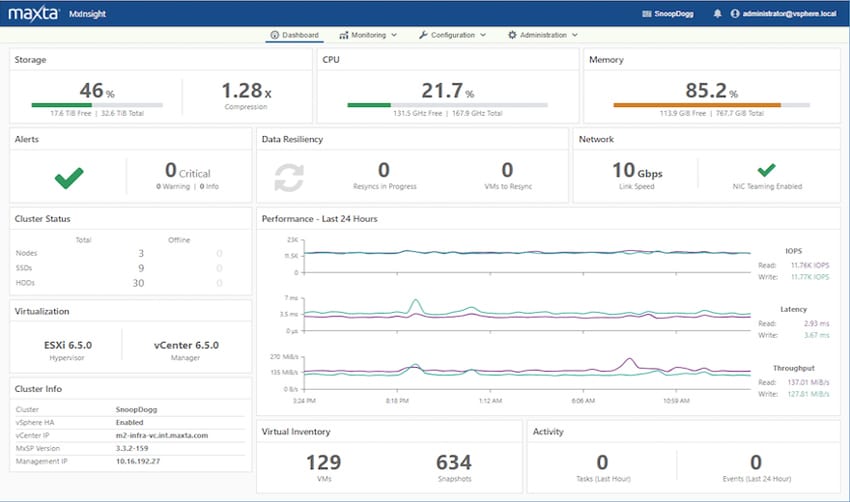On August 22nd, Maxta Inc announced a pre-configured system of Red Hat Virtualization software and Maxta Hyperconvergence software bundled together on Intel Data Center Blocks hardware. Maxta specializes in hyperconverged software like this and will be demoing it next week at VMworld, booth #1518.

Maxta and Red Hat's joint solution claim to provide many of the advantages of appliance-based hyperconvergence with few of the disadvantages. Maxta promises no refresh tax, no upgrade tax, no VMware tax, and no proprietary virtualization. The offering collapses servers, storage, and networking into a single server tier that runs virtual machines and containers. Storage is configured automatically when VMs or containers are created allowing administrators to focus on managing applications rather than storage. The combination of Intel Data Center Blocks, Red Hat Virtualization, and Maxta Hyperconvergence Software provides the operational and capital expense reductions desired by organizations, but in a way that is less expensive to procure, refresh and expand when compared to appliance-based hyperconvergence. The offering should support increasing capacity by adding drives; replacing smaller drives with larger drives, or of course adding new instances. Since organizations own the Maxta hyperconvergence software license for the life of the organization, there is no need to repurchase the software license when refreshing hardware. The offering also provides support for Red Hat Virtualization and Red Hat OpenShift on the same server platform.
Availability
Immediately




 Amazon
Amazon